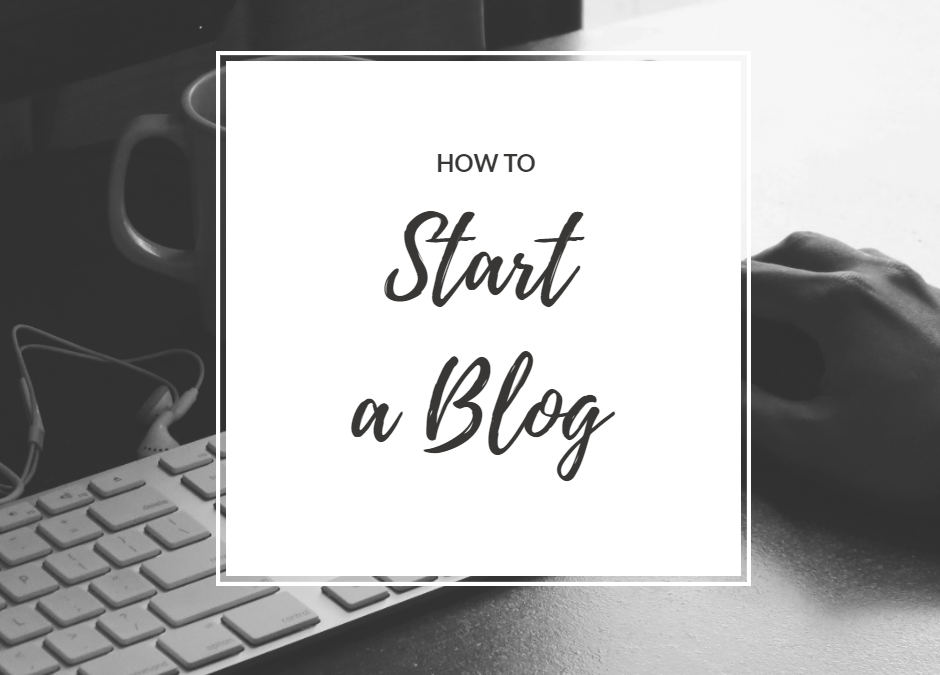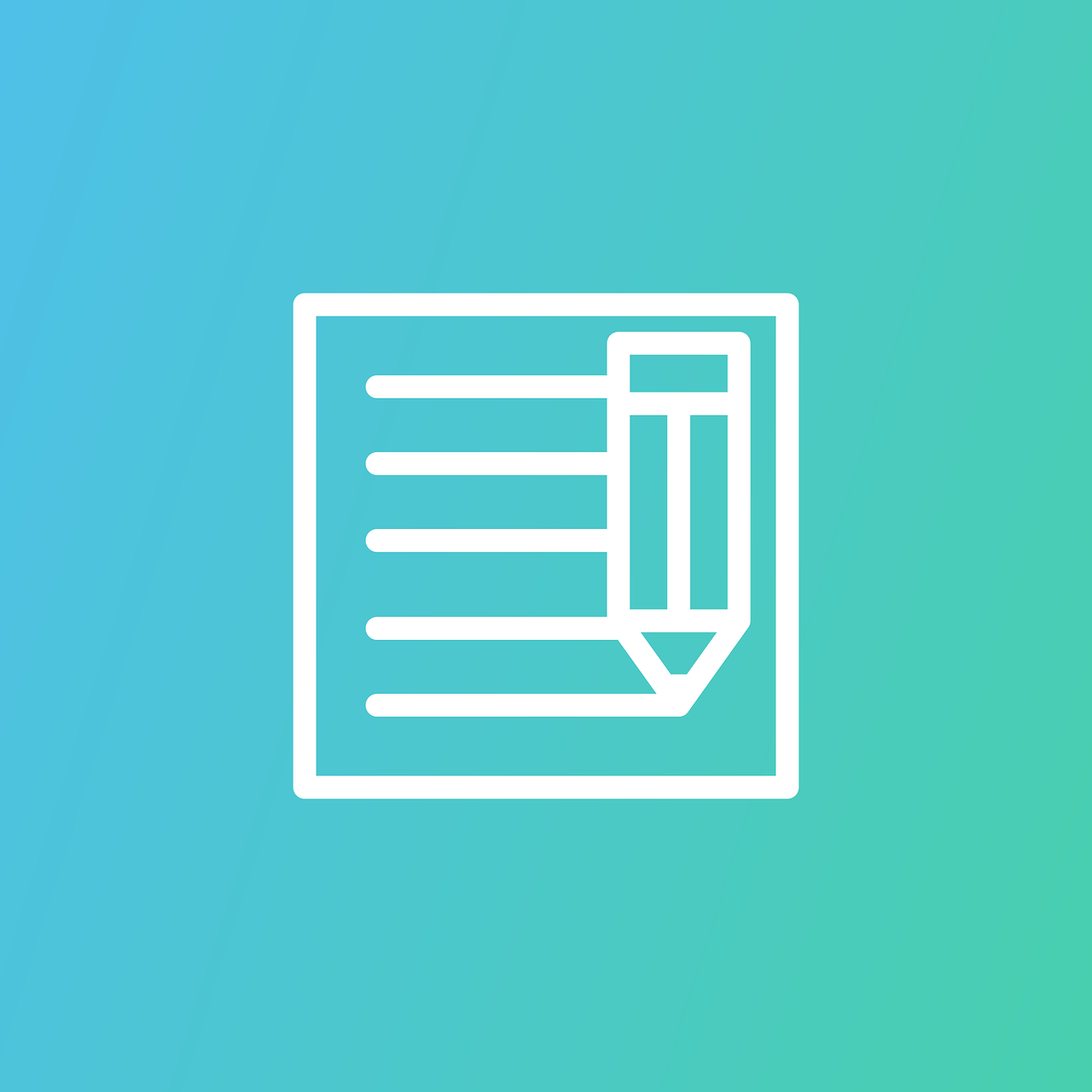
by Cori-Leigh | 6 Steps to Starting a Blog, Blogging |
Do you have a blog idea brewing but don’t know where to begin?
Your blog doesn’t have to be perfect it just needs to start!
I encourage you to start the blog you have been thinking about creating.
It will be your piece of real-estate on the web! Your blog will grow with you.
Your efforts will produce results.
You can learn as you go.
It gets better over time.
Enjoy the blog starting process!
Later, you will discover that what seems so hard today has become easier.
In this post, I cover 6 steps that will help you accomplish starting your blog.
1. Find your voice. Discover Your Niche Topic.
Some people set up a blog and seem to already know what they are going to talk about. For others, this can be and often is a very difficult part of the starting process.
Truthfully, many bloggers starting out don’t give enough attention to this step.
You might be asking what does finding my voice have to do with starting a blog?
It has a lot to do with it. In fact, it is one of the most important starting points for every blogger.
It is through the discovery of every blogger’s unique voice that the appropriate blog topic is found. Once you discover your voice you will have a blog that sustains not only your interest but your readers as well. If you haven’t done so already, I’d like to encourage you to take a bit of time to explore this part of starting a blog.
2. Choose A Domain Name
Once you know your topic the next step is choosing a domain name for your site. A domain name is the web address or URL of your blog. If you don’t know much about domain names or how to choose one, you are not alone. This is not always an easy task even for the experienced blogger.
The blogging world has grown considerably in the last decade.
Many domain names we first think of are already taken. Deciding on the right one can be difficult. To read more about how to choose a domain name, click the link below; Choosing Your Domain Name
3. Web-hosting
This point is for those using WordPress.org it doesn’t apply to WordPress.com. Not sure what the difference is between the two? See this video tutorial by Greg Narayan explaining What’s the difference between WordPress.com or .org?
If you choose to use WordPress.org you will need a web hosting company. There are many hosting companies available to choose from. However, it is very important to choose a good one.
3. Choose a Blogging Platform
There are many various blogging platforms to choose from. I highly recommend WordPress. I have found it to be the best place to start a blog. I also recommend using self hosted rather than the free .com version of WordPress.
Not sure what the difference is between the two?
See this video tutorial by Greg Narayan explaining the differences plus pros and cons of each.
WordPress.com vs WordPress.org Difference, Pros & Cons
If you choose to use WordPress.org you will need a web hosting company. There are many hosting companies available to choose from. However, it is very important to choose a good one.
While I strongly recommend WordPress – If you feel WordPress is not for you there are other popular blogging platforms;
3. Web-hosting
There are many hosting companies available to choose from. However, it is very important to choose a good one.
Popular choices are;
5. Choose a Theme
There are many WordPress free and premium themes available to choose from. It can seem daunting trying decide which one is best for your needs. Often feeling like your shopping in the wilderness among millions of themes to choose from.
This is a step you want to take seriously as it isn’t a great idea to continually change themes once you’ve already gone live with your blog.
Choose a good theme that it is responsive on all devices
This means it shows up nicely responsively on any device.
While I highly recommend premium themes and page builders there are many bloggers who do choose to go with free themes.
This too is okay but the downside is you have less support with the free versions. That said, I have made many websites for clients with their chosen free WordPress themes.
There are great tutorials to help you starting out;
Check out the following You Tube Channels;
Greg Narayan
Darrel Wilson
Ferdy Korpershoek
WPCrafter
6. Customize your theme
You’ve chosen your theme but now don’t know what to do with it. Whether free or premium all themes need to be customized to create the desired look and feel. Now it’s time to create a simple start blog design.
Less is more starting out when it comes to customizing your blog.
It just needs to be easy to navigate, with simple design and customizations with the addition of your content.
A couple of blog posts and a great about page will be an awesome beginning! The most important thing is you started! Now with time you can grow as a blogger and watch your blog grow with you.
As you connect with others and continue to learn all you can about blogging.
Congratulations if you’ve already started your blog!
What challenges have you faced beginning your blog?
Happy blogging as you begin to build your blogging dreams!

by Cori-Leigh | Blogging |
You worked hard starting your blog. It’s been your baby project. You’ve started, created, and launched. A victory right? A big yes!
The truth is many people set up a blog. Go through the process of developing their blogs. Then discover readers just aren’t showing up! Time passes, and more time passes. You still aren’t getting the desired traffic to your blog.
(more…)

by Cori-Leigh | Blogging |
Create a blog with your readers and site visitors in mind. Doing this is essential to your blogging success. Your readers appreciate and notice when you take the time to show you care. Your blog needs to be a place they love to visit often.
I’ve seen many blogs that show just the opposite. A large number of blogs lack qualities that attract readers to return. These bloggers are left to wonder why their blogs are not getting much traffic or loyal readers.
We can’t expect to create blogs that are an instant success. They take time to grow.
For your readers to enjoy coming to your blog there are a few things you need to do.
Create a blog that your readers will love and want to return to often.
Make it about them not you.
Create a blog that’s easy to navigate.
Readers visiting love a website that is easy to navigate.
Make it easy for your reader to find everything you offer.
I visit many websites that are cluttered with unnecessary features.
It isn’t necessary to have too much content on the homepage.
If their first impression offers too much at a glance they’ll leave.
They won’t go on a content hunt for what they want.
Most of your readers will not make it to the bottom of the homepage.
Keeping your homepage to a shorter scroll helps them go right to your content.
Keep the design simple and effective.
Many blogs these days are over designed.
This is problematic for not only your reader but you too.
Your blog readers and followers should see your content stand out!
I visit many blogs that are heavy in design but not content.
Or it’s filled with a ton of posts and other content but there is no organization.
Leaving the visitor to get lost in all the content.
A simple and attractive blog design is inviting.
It’s filled with content rich flow and encourages the reader to come back.
In contrast, a blog that is over designed is a cluttered blog.
This is not a pleasant user experience.
Focus on produces more content and less design.
Creating a place that your readers can enjoy.
You will have a better time managing a simple but effective blog.
Doing this allows you time to focus on creating more rich content!
Be a consistent blogger.
Readers love it when they can rely on your consistent habits of posting and connecting.
They trust you more when you produce content often. Consistent bloggers show up often.
Develop a consistent blog posting routine that you can keep up with regularly.
Stick to a posting habit you can manage rather than posting 1 week but not the next.
Or posting every other day for a few weeks and then not post for a month.
Write from a place of love for your reader.
When you care about someone you show them you care.
You show not just tell. Love is demonstrative.
If you don’t show your reader you care they won’t stay.
Rather they’ll find a blogger who demonstrates they matter.
Make it about your reader.
When you blog for yourself that is how you write.
If you are blogging for your readers it is about them not you.
Readers love posts laced with stories from you.
It helps them see you understand the problem their having.
Make it personal and effective.
Show them you genuinely care for them.
Create quality content.
Give attention to the quality of your posts.
Readers will search for something they need.
A problem they need to solve and are seeking solutions.
The quality of your content will keep them coming back for more.
If you write with your reader in mind they will notice that.
Some of these visitors to your blog will become loyal readers.
Solve a problem.
Do you want to make your website irresistible to your reader? Solve a problem and provide solutions for your readers. They won’t be able to resist coming back.
- Produce valuable content that helps in significant ways.
- Give to your reader generously more than you get.
- Expect nothing in return and just keep providing help.
Connect your blog to social media
Your readers will love to connect with you often.
It’s important for them to meet the person behind the message.
You can do this by responding to their post comments.
It’s beneficial to connect your blog to a few social media networks.
I love Facebook and Twitter as a means of engaging often with my readers.
Conclusion
Ensure a pleasant experience when readers visit your blog and they’ll keep coming back. Your blog will be a place that you and your readers connect often. Give of yourself generously to your readers. Do this and you’ll establish a trust with them.
Let’s hear from you – What is one thing you do to help your readers enjoy coming back to your blog?

by Cori-Leigh | Blogging |
The idea of starting a new blog is exciting! This initial enthusiasm quickly turns to frustration when we realize the many details involved. Designing and customizing a blog is often a challenge for many beginner bloggers.
In this post I share how you can quickly start, create, and launch a blog that looks pleasing to your readers. One that is easier for you to manage when completed. Using a simple start design that works. You can easily build on it over time. It doesn’t have to be perfect!
I remember starting my first blog. As a writer all I wanted to do was write. I didn’t know the first thing about how to begin designing my blog. Visitors would see my site disaster then quickly run for the hills! All I’d seemed to accomplish was a ton of mounting frustration, overdoses of discouragement, a site that looked awful, and nothing was working right!
In this post I provide tips starting a blog with a simple clean design.
1. Why begin with a simple and clean design?
Creating a simple design is the best way to start. In the beginning less is more. Nothing fancy. Especially if you don’t know what you’re doing yet.
Of course we all want great looking blogs. It’s easy to look at the big picture. When we do this we fail to understand the importance of the small steps that lead us where we need to be.
We have to simplify our mindset. If we don’t do this then we can’t enjoy the process of starting a blog. Instead of enjoying the process of starting a blog we can become overwhelmed and stressed.
First impressions count. Have you ever heard the saying, ” You never get a second chance to make a first impression?”When someone visits your blog for the first time they will formulate what they think at first glance.
This is another great reason for a creating a simple start design. By making your blog pleasing for everyone you will be sure your visitors will appreciate it. You’ll have succeeded at making a great first impression!
7. Blog Page
8. Blog Posts
If you want to design a header it is best to keep this simple also.

by Anne Peterson | Blogging |
This is a guest post contribution by Anne Peterson. Today Anne helps us understand how keeping a journal keeping a journal helps writers. Anne is a poet, speaker, and published author of 16 books, including a children’s books, poetry books, two memoirs. Her most recent book is her second memoir entitled, Always There: Finding God’s Comfort Through Loss.
It started innocently. Someone shared how they enjoyed writing in a journal and suggested I might also enjoy it. How hard could writing in a journal be? You make an entry every day and write what you feel like writing.
Little did I realize it at the time, but writing in a journal was extremely helpful. And I have a bunch of journals to prove it.
When the words won’t come
Whether you want to call it writer’s block or you have another name for it, sometimes words do not flow. Journal writing is an effective way to get my creative juices flowing. As simplistic as it sounds, it really did help.
As a returning student, one day in an English class, I sat there trying to put something on the paper before me. But instead of the words pouring out of me, I had nothing. Zilch. Zero. And so I just started writing what I was feeling…
I don’t know what to write. I don’t know what to write.
Over and over I repeated that sentence. I didn’t feel foolish, at least no one else knew of my struggle. And then, all of a sudden the door of my mind opened and words started tripping over each other, trying to get out. And journaling helped me more than one occasion.
A great storage place
Writing in a journal gave me a place I could just let my mind unwind. And when I did some free writing, I found myself going at it in full force. I didn’t have any direction as yet, but that was okay. I concentrated on just getting the words out on paper. I could store them there until I knew exactly what I wanted to do with them.
I’m a poet and I find it interesting that some of my best poems started in a journal. I felt free to sit and reflect with no pressure. Just like when we were kids and we would lay on the ground outside looking up at the cloud shapes and trying to imagine what they were. No pressure, just reflection.
An emotional outlet
Sometimes we’ve got ideas, but we struggle to get in touch with them right away. This is where I’ve found it’s helpful to just write them out.
Are you angry? Then go at it. And use all the exclamation points you desire. Are you sad? Then go ahead and get those melancholy words out, you may even find you feel better afterwards.
Sometimes as writers we need to grease the machinery to get it moving with ease. At those times, I do free writing. Whatever pops in my mind ends up on my paper. And I usually feel energized once that happens and I sometimes have trouble stopping. And that’s a good problem to have.
Whether we are blocked in our writing, we want a convenient place to store ideas, or we need to vent, journaling is a great idea. Then we’ll be free to do the thing we’re meant to do—write.
We gently coax words out, directing them where they should go as we pepper punctuation here and there. And then our story starts to take shape. There may be times we have to exclude some words, and they may not be happy about it. But if we’re gentle, we can convince them we may be able to use them at a later time.
Writing is a privilege
Writing is not a hobby for me. I see it as a calling. Something I was made to do. In fact, I was only in 5th grade when I discovered my love of writing. Miss Farnsworth had just told us that there would be a contest. We were to write a creative essay or poem. It could be about anything we chose.
The idea came to me after a few moments. I’d write about my Shadow. How my shadow followed me everywhere. At the end of my paper, I revealed my shadow was really my 3 year old brother, Steve.
Turning in my paper, I smiled inwardly. I sure wanted to win, but even if I didn’t. I had so much fun writing my piece.
The next day she announced the winners.Three were chosen. Barbara Edgecomb wrote a poem about Babies, I think Kenneth Dobson wrote a winning piece as well. My heart started racing as I waited to hear the third and final winner.
Did she really call my name? I was overjoyed. The prize was that we all got to go downtown Chicago to read our pieces on WBEZ, the educational radio channel. It truly was a thrill, but more importantly, it was then I realized my love for writing. I take writing seriously. I believe everyone has a voice. One that needs to be heard.
And I’m doing my very best to fulfill that calling. But writing is not just something I like doing. I have to write. For me, it’s like breathing.
Your turn. Let us know in the comments;
Do you keep a journal?
How has journal writing helped you become a better writer?

by Cori-Leigh | Blogging |
Do you find it difficult to write and publish posts to your blog regularly? Many bloggers complain they simply struggle to find the time to write. For these bloggers they face feeling stuck and discouraged. The great news is you can develop a blog posting routine easier than you may think!
You don’t have to write extra long posts of a few thousand or more words. It’s better to practice writing well and produce shorter posts starting out. Posts of 600 words are a great exercise. Doing this will help you to become a skilled writer. Helping you to write with brevity and create quality content.
It takes time to develop the skill of writing and publishing regularly. We can’t get better at anything unless we learn to enjoy the process. The most important thing is to start writing daily. Consistently publish content to your blog!
 Set aside time to write daily.
Set aside time to write daily.
Do you wait for the inspiration to write? If you wait you may be stuck for quite a long time! Writing doesn’t flow freely unless you take the first step!
You have to show up and be committed to the act of writing everyday. Professional bloggers write daily even if they don’t want to.
Decide on a time and place that works best for you to write. Doing this helps you to take your writing seriously. Write intentionally and with purpose. It won’t take long to get into the correct mindset. In time you will develop a daily writing habit.
What has helped me is using a kitchen timer for 15 – 30 minutes. I’d refuse to stop writing until the timer goes off. By that time the words are flowing freely. I can continue writing until the post is done! I still do this when I see I’m distracted by many things going on around me.
[bctt tweet=”The more you write the easier it becomes. Soon writing daily will become a habit. Your thoughts will flow like running water!” username=”https://twitter.com/CoriWriterBWP”]
Writing a blog post is not a one step process.

If you don’t develop and adhere to a blog posting routine then you’ll struggle as a blogger. Remember why you started your blog in the first place. We have a blog to write for the reader. To help them solve a problem based on the area you write about.
Developing practices that enable you to create quality blog content is essential to your growth and success in blogging.
To succeed at this you have to fill your blog with quality content. To do this you have to write and publish regularly. In a routine your readers can rely on. Writing your posts is not a one step process.
I’m a part of Jeff Goins Tribe Writers community.
What helped me to improve how I wrote my blog posts is by Jeff’s 3 bucket system.
It`s simple and effective!
The 3 bucket system is comprised of 3 steps. Ideas, drafts and edits.
 Using a blog post template.
Using a blog post template.
A few years ago I started using a blog post template. Doing this helps me to quickly create my post foundation. Comprised of a few simple steps to start.
Michael Hyatt shares here how to
Use a Blogging Template to Write Posts Faster
I start my posts by quickly laying the foundation. Once I’ve done this the rest is easy!
- Introduction – What is your post about? Give a brief description here.
- Headings- Write out each heading. You can change up the wording later.
- Content- fill in each heading point with a bit of content.
- Conclusion – wrap up the post with a short conclusion.
It helps the close of your post when you generate a conversation around your post with a call to action question.
Kick fear and perfectionism to the curb.

Many writers and bloggers struggle with taking too long to write and publish a post. I used to be one of those bloggers who would take way too long!
What causes us to take too long crafting a blog post? A fear based mindset will hold your blog post writing back. Awareness is the key to dealing with the fears that lead to perfectionism.
These fears are guaranteed to generate writer’s doubt making it difficult to hit publish! When you calm your blogging fears you’ll kick perfectionism to the curb!
With practice and the right blogging mindset you’ll be well on your way to writing and publishing your posts quicker and more regularly.
They are guaranteed to generate writer’s doubt making it difficult to hit publish! When you calm your blogging fears you’ll kick perfectionism to the curb!
 Create a routine that you can manage.
Create a routine that you can manage.
When we set a routine that is manageable it is easier to maintain. If you write 1 post per week and can consistently post this routine then keep doing it. On the other hand if you write 3 posts 1 week and next week nothing it confuses your audience.
The intentional effort given to creating a blog posting routine will take you far as a blogger.
Doing this will help you grow as a writer and blogger by leaps and bounds!
Let’s hear from you!
Do you have a blogging routine?
What helps you to consistently write and publish blog content?







 Set aside time to write daily.
Set aside time to write daily.
 Using a blog post template.
Using a blog post template.
 Create a routine that you can manage.
Create a routine that you can manage.